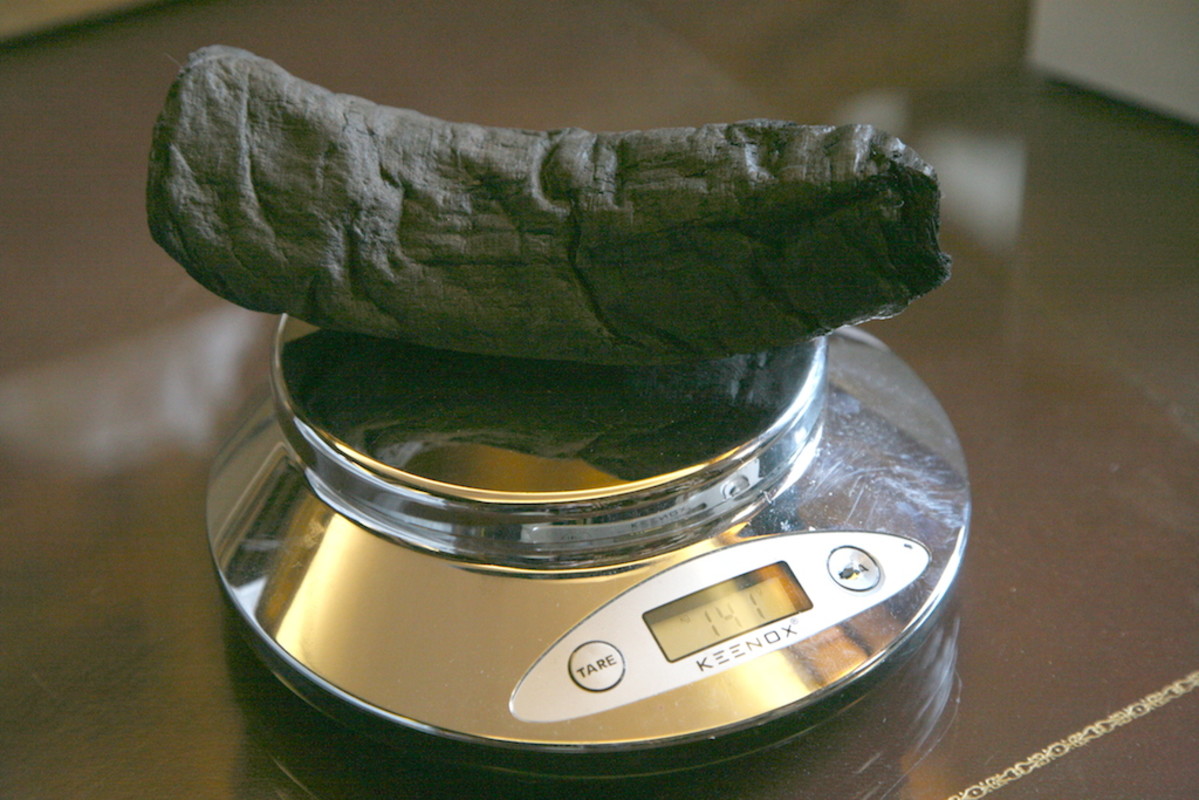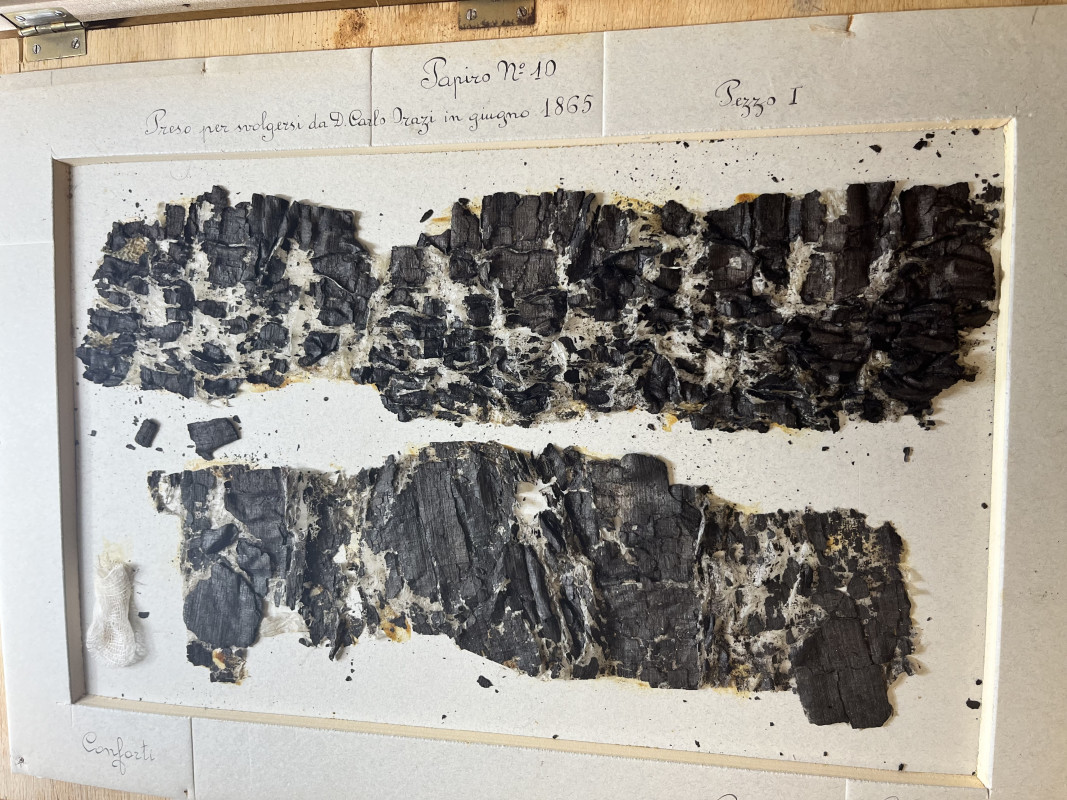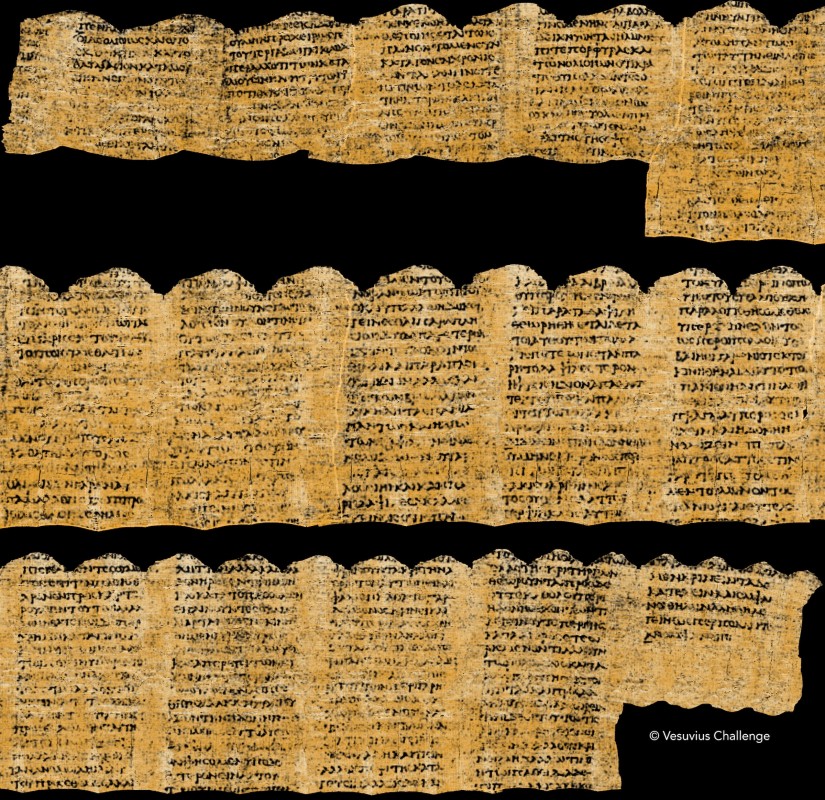Three students have used AI to decipher the initial passages of a Herculean scroll found buried in the Mount Vesuvius eruption of 79 A.D. For their efforts, they won a whopping $700,000 in prize money from the Vesuvius Challenge, a competition which asks amateur papyrologists to try their hand at deciphering scrolls recovered from the eruption. The Vesuvius Challenge announced news of the winners earlier this week.
The winning team was comprised of Youssef Nader (Egypt), Luke Farritor (United States), and Julian Schilliger (Switzerland). They reviewed more than 2,000 “never-before-seen” scrolls found at Mount Vesuvius which shed insight into the culture, music, art, and everyday life of 79 A.D. Some writings were incredibly specific, such as one which described the color of purple and another recalling the flavor of capers.
AI had to be used to decipher the writings because the papyrus on which they were printed was so brittle that it would be destroyed if touched by human hands. They were able to translate about 15 columns of text, which accounts for just five percent of the scroll’s contents. However, the Vesuvius Challenge noted that they were able to cull more text from this scroll than any other in the competition. The team is sharing the $700,000 grand prize.



The Mount Vesuvius eruption leveled the cities of Pompeii, Herculaneum, Torre Annunziata, and Stabiae, causing thousands of deaths. Priceless ancient texts from the Herculaneum library were buried in the tragedy, or carbonized with ash and gasses.
It wasn’t until 1752 that the desecrated scrolls appeared again near the Bay of Naples. Since then, scientists have worked tirelessly to reveal their contents. This recent translation is an unprecedented step forward in that process.
The AI program which deciphered the scrolls worked by reading ink on the paper’s surface as well as the hidden, unopened layers. The author is thought to be Philodemus, a famous philosopher whose home was located where the scroll was ultimately found. In the translated text, the author discusses how the availability of certain foods affects their pleasure.
The text reads: “As too in the case of food, we do not right away believe things that are scarce to be absolutely more pleasant than those which are abundant. However, is it easier for us naturally to do without things that are plentiful? Such questions will be considered frequently.”
It concludes: “...for we do [not] refrain from questioning some things, but understanding/remembering others. And may it be evident to us to say true things, as they might have often appeared evident!”
For the team that finally cracked (some of) the code, the plaudits are hard won. “'It's been an incredibly rewarding journey,” Nader said. “The adrenaline rush is what kept us going. It was insane. It meant working 20-something hours a day. I didn't know when one day ended and the next day started.”
from Men's Journal https://ift.tt/q5BwXWH
No comments:
Post a Comment